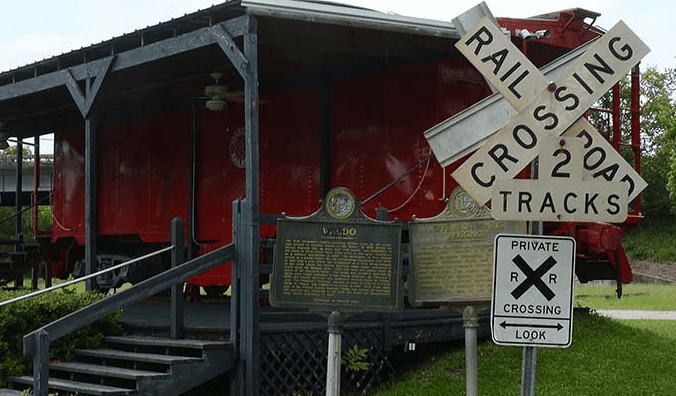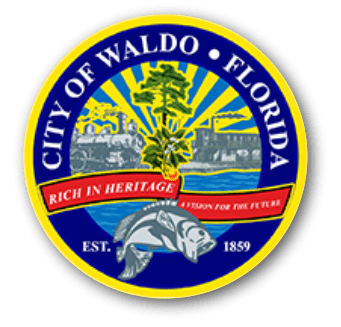 Guide books and advertising in northern newspapers was selling Waldo to the tourist trade as a winter playground. It was said to be an excellent place for anyone to settle. In these years the Opera House was built. Fishing and hunting were enjoyed within the range of a few miles, and baseball games on afternoons on weekdays, attracted large crowds.
Guide books and advertising in northern newspapers was selling Waldo to the tourist trade as a winter playground. It was said to be an excellent place for anyone to settle. In these years the Opera House was built. Fishing and hunting were enjoyed within the range of a few miles, and baseball games on afternoons on weekdays, attracted large crowds.
In the 1870’s Waldo was advertised as a Winter Playground attracting Tourists who arrived by railroad to vacation. There was an opera house which presented plays, lunches served at the Waldo Hotel, baseball, and cruises on the Lake Alto. Trains stopped at Waldo during the noon hour allowing the passengers to have luncheon at the nearby Waldo House. Once off the train they saw what George M. Barbour described so vividly after his first visit to Waldo. He wrote about the attractive Town Park, well kept and fenced, and of the bandstand from which the local “band” provided music heard for blocks. Barbour considered the design of the bandstand well worth mentioning, with its ship shape and mast-rigged flag staff, the gift of one of the several sea captains, who found Waldo such a delightful place. Barbour described the neat rows of cottages, the grassy lawns, trimmed and clean, and the luxurious flower and vegetable gardens, as well as the number of orange trees in most yards. At this time, there were several large orange groves in and around Waldo. W. T. Cheeves owned one in the east section between the railroad and the Old Bellamy Road in the East section. C. K. Dutton property was also in the southeast. H.H and Thomas owned 56 acres on Lake Alto and later are reported to have 1,000 orange trees, over 100 pear trees, and a number of peach trees. Dr. Edward Paschall also lived in Waldo. George Ambrose settled north of the railroad tracks on the East Side of present US 301 when he came to Waldo in 1880. Hardee Raulerson groves were in the western part of Waldo. The old Camp Baker property, south of the Transit railroad on the West Side of Waldo was bought by J. E. Chadwick after the end of the Civil War and turned into orange groves. It was later Nelson Alonzo Harris from Wisconsin On March 9, 1881 a canal was completed between Lake Alto and Lake Santa Fe making it possible for a steam boat to visit the farms around the lakes to buy their produce. The produce was taken to a railroad spur in Waldo where it was unloaded for the trip to northern markets. Oranges were one of the larger crops which were sold for the northern markets until the Big Freeze in the 1890’s which destroyed the groves of citrus. Citrus was lost as a commercial crop, leaving the hauling of lumber, shipping of flowering plants and pleasure cruises around the Lakes as the only sources left for revenue to operate the Steamboat.
The first steamboat on the canal after the dredging was the F.S.Lewis, The dredge had been built by Waldo resident named Elgin. He also designed the paddle wheeler for Lewis, Steger, and Farrell which was named for Lewis. The F.S.Lewis made its maiden voyage April 26, 1881, carrying a happy group of people from Waldo on a round trip to Melrose. It was between 65 and 70 feet long, had two decks and was of the same design s the Mississippi River paddle wheelers. The canal was 30 feet wide and a depth of five feet . When the water was low in the summer, or when soil washed down the canal banks, traffic was blocked until it could be cleared. The F.S.Lewis was built in Waldo. The Captain was S.C. Barker, who spent his younger years in command of sea craft.
